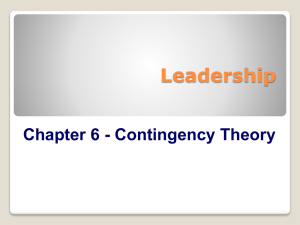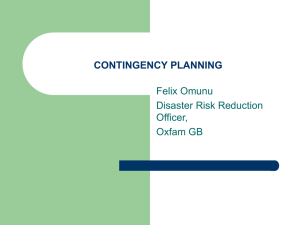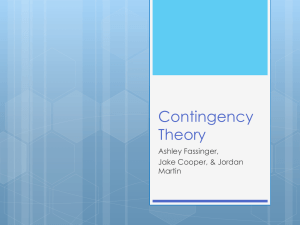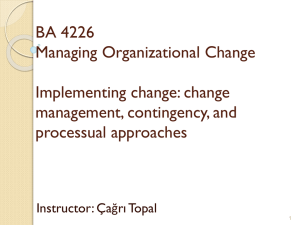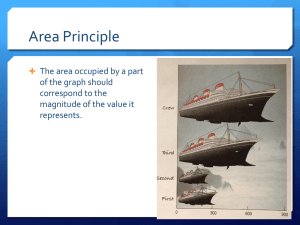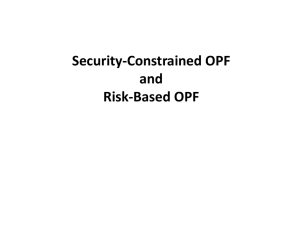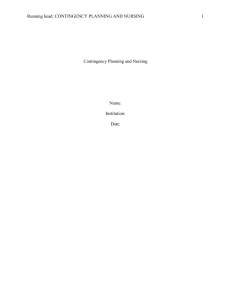Contingency Theory Approach
advertisement
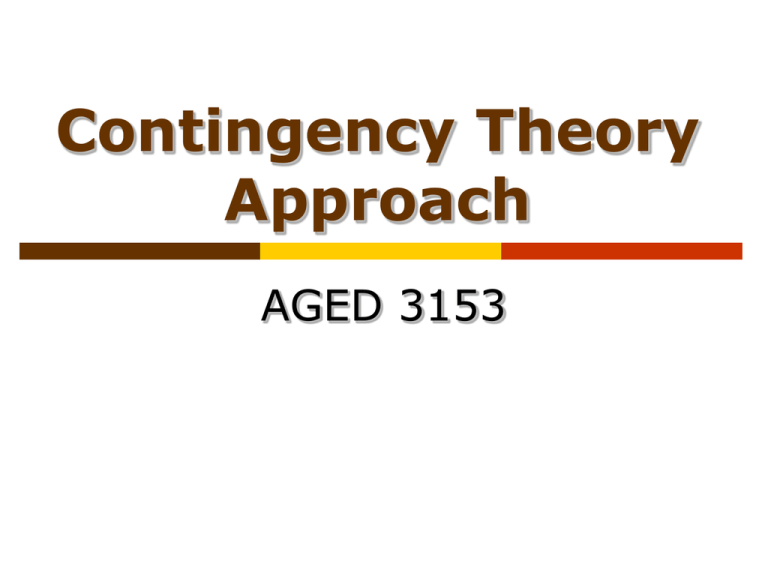
Contingency Theory Approach AGED 3153 Leadership should be more participative than directive, more enabling than performing. ~Mary D. Poole Overview Contingency theory approach perspective Leadership styles Situational variables Research findings How does the contingency theory approach work? Based on… Fiedler & colleagues Studied styles of leaders who worked in different contexts. Primarily military organizations Styles of good and bad leaders Assessed: Styles Situations Effectiveness Contingency Theory Approach Why “contingency?” based on how well the leader’s style fits the context To understand performance you must understand the situations in which one leads. Concerned with Contingency Theory Approach leader-match theory Effective leadership contingent on matching a leader’s style to the right setting Leadership Styles Leadership styles are described as: Task motivated Relationship motivated goal achievement developing close interpersonal relationships Least Preferred Co-Worker or LPC Used to measure leader style Measures your style by having you describe a coworker with whom you had difficulty completing a job. Not necessarily someone you don’t like Situational Variables Determine favorableness of various situations in organizations. Three situation factors group atmosphere degree of confidence & loyalty attraction of followers for leader degree to which task requirements are clear & defined designates the amount of authority a leader has to reward or punish followers Leader-Member Relations (LMR) Positive atmosphere Subordinates trust, like and get along with leader Unfriendly atmosphere Friction exists within group Task Structure (TS) Structured Gives leader more control Requirements clearly stated & known Few alternatives Clearly demonstrated task Limited number of correct solutions Unstructured No clear rules Many alternatives Correctness cannot be verified No best way Example: Lessens the leaders control Example: Position Power (PP) Includes legitimate power Strong Hire or fire or give raises in rank and pay Weak Limited ability to reward or punish Contingency Model Situational Variables High Low High Low Structure Structure Structure Structure Strong Weak Strong Weak Strong Weak Strong Power Power Power Power Power Power Power 1 2 3 Low LPCs Middle LPCs 4 5 6 High LPCs Preferred Leadership Style 7 Weak Power 8 Low LPCs Situational Variables Favorable Situations going smoothly Situations with some degree of certainty; not completely in or out of leader’s control Unfavorable Situations out of control Most favorable Moderately favorable Least favorable Good LMR Defined TS Strong PP Poor LMR Defined TS Weak PP Moderately favorable Falls between 2 extremes Eight categories Task orientation LMR - TS - PP Relationship orientation LMR – TS – PP good-structured-strong good–unstructured–weak good–structured-weak poor–structured–strong good–unstructured–strong poor–structured-weak poor–unstructured-strong poor–unstructured-weak Interpretation of ineffective leaders Fiedler (1995) Leader working in the wrong situation experiences stress & anxiety Leader reverts to less mature ways of coping Results in poor decision making Negative work outcomes How does the contingency theory work? What are strengths of the contingency theory? What are weaknesses of the contingency theory? How do we use the contingency theory?
